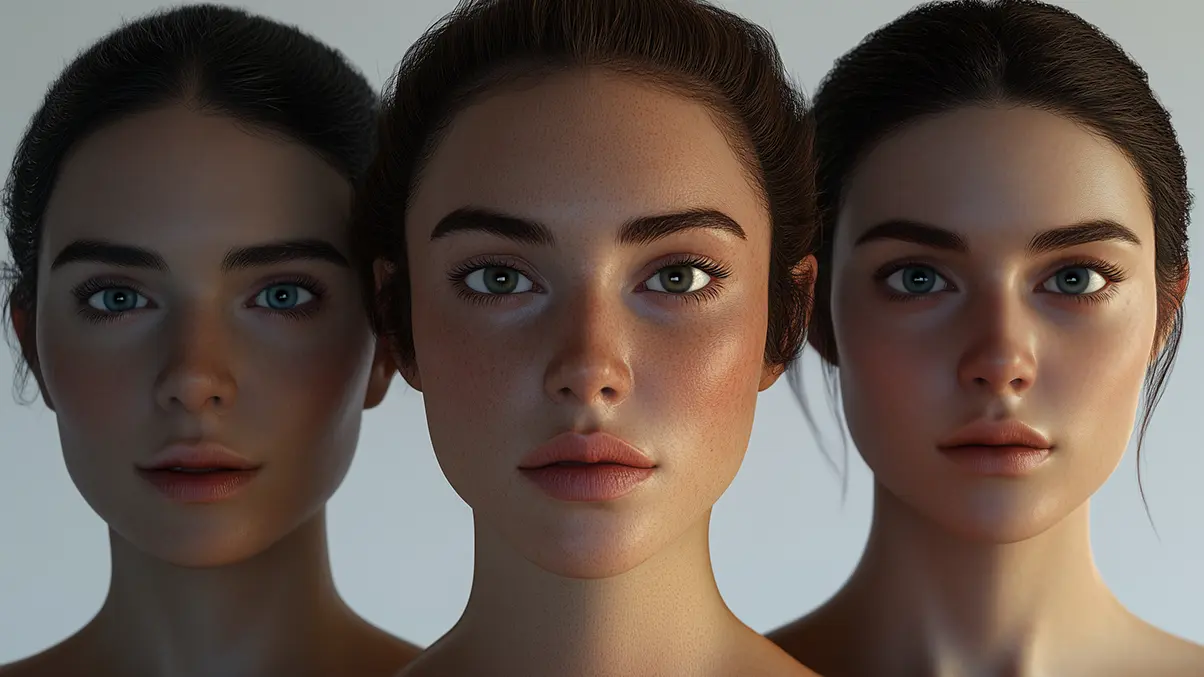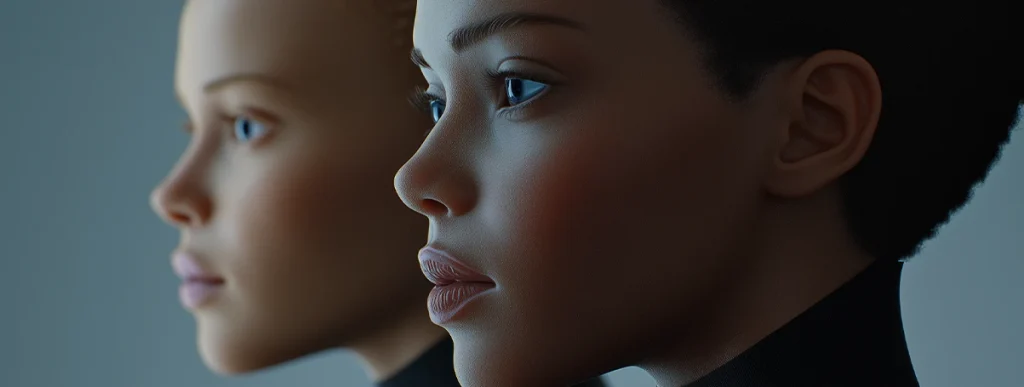Overview

The latest wave of artificial intelligence has opened up a wide array of tools designed to support creativity in the digital world. From large language models (LLMs) to voice synthesis and procedural animation, these AI-powered technologies are increasingly being used in tandem with realistic 3D models to create AI avatars—digital representations that simulate real people. Once a novelty, AI avatars are now becoming mainstream in social and business environments. For creators navigating the fast-paced demands of online life, AI influencers offer a compelling solution to increase fan engagement, reduce workload, and expand creative possibilities.
This article explores what AI avatars are, how they’re built, and how they can benefit artists and influencers working across digital platforms.
What are AI avatars?
The word “avatar” originally emerged from gaming, used to describe a player’s digital character in online role-playing worlds. Over time, the concept has evolved. Today, avatars are found across gaming, social media, and virtual environments like the Metaverse. The next generation—AI avatars—pushes the idea further, merging advanced 3D modeling with artificial intelligence to create autonomous, interactive virtual personas.
Realistic AI avatars are rendered with high-fidelity 3D visuals and enhanced through cutting-edge AI tools that bring them to life. These avatars don’t just look human—they talk, move, and react like us. They represent a new era of digital identity, blending technology and personality to enable new modes of interaction in entertainment, content creation, and online branding.
The technology behind AI avatars
![]()
Realistic AI avatars are built using a fusion of technologies, each component contributing to the illusion of a lifelike digital being.
Text generation is powered by large language models, which produce context-aware, human-like dialogue. These models draw on vast datasets to respond naturally to prompts in real time, allowing avatars to hold meaningful conversations.
Voice synthesis operates on similar principles, leveraging deep learning to clone voices from samples found in interviews, video content, or podcasts. Advanced modulation can inject inflection and emotion, making the voice feel authentic and expressive. This technology is commonly used by musical AI artists in the creation of convincing vocal performances.
Visually, 3D AI avatars rely on high-quality models. These range from stylized to photorealistic designs, depending on the creator’s intent. Capturing a person’s likeness often involves photogrammetry—a technique that scans and reconstructs physical features in 3D with high accuracy.
Animation combines traditional 3D workflows and motion capture with AI-driven systems that simulate gestures, body language, and facial expressions in real time. Procedural facial animations allow for subtle emotional nuance, resulting in avatars that feel alive.
Together, these tools create immersive 3D AI avatars capable of emulating real people or inventing entirely fictional characters with remarkable believability.
AI avatars in creative industries
AI avatars are already leaving a mark on creative sectors by offering new tools and reshaping workflows.
In music, AI has proven both a disruptor and a creative catalyst. While some artists are skeptical about the advent of AI artists, others—particularly those working in virtual music scenes—have embraced AI avatars to front their digital personas. These virtual performers can sing, dance, and interact with fans, all without the logistical constraints of traditional touring.
![]()
Fashion is also embracing 3D AI avatars. Virtual AI models are being used to prototype collections, walk digital runways, and appear in online campaigns. These avatars allow brands to control every aspect of presentation, scale production, and reach global markets with minimal overhead.
In digital marketing, AI avatars are being developed to engage niche audiences with tailored messaging. Brands are creating custom AI influencers to represent products, narrate ads, and even host livestreams—all while maintaining complete control over branding and scheduling.
On social media, AI avatars streamline content creation. Creators no longer need elaborate setups or constant on-camera presence. Instead, AI influencers can produce content on their behalf, lowering barriers to entry and ensuring a steady digital presence.
Case studies: The rise of AI influencers

AI avatars are no longer fringe experiments—they’re social media stars with massive followings and lucrative brand deals.
Miquela Sousa, better known as Lil Miquela, is one of the most iconic examples of AI influencers. Created by Trevor McFedries and Sara DeCou, Miquela is a 21-year-old Brazilian-American virtual AI model and singer based in Los Angeles. With over 2 million Instagram followers, she shares snapshots of a carefully curated fictional life, including makeup routines, fashion shoots, and collaborations with major brands like Calvin Klein.
In Japan, Imma has emerged as a bold and boundary-pushing AI influencer. Known for her neon-pink hair and avant-garde style, this AI Instagram model blends art and tech to challenge conventional ideas of identity. Imma has partnered with brands such as IKEA, Nike, and Porsche, and uses her platform to engage in philosophical discussions about the future, consciousness, and the environment.
These virtual AI influencers prove that digital personas can build genuine fanbases and shape pop culture, just like their human counterparts.
Why artists and influencers should consider AI avatars
For artists and influencers, AI avatars offer both practical and creative advantages.
First and foremost, they can enhance fan engagement. AI-generated influencers can interact with followers at any time, responding to messages, hosting Q&As, or even delivering personalized greetings. This kind of one-on-one interaction—previously impossible at scale—helps foster deeper fan relationships.
![]()
AI avatar tools also offer an alternative to the demands of live performance. Touring can be physically exhausting, time-consuming, and subject to disruptions such as visa issues or public health crises. Avatar-based AI artists enable virtual concerts or appearances, preserving an artist’s energy and reducing logistical complexity.
Language barriers are another area where AI avatars can help. With multilingual capabilities, AI influencers can deliver localized content and communicate with international audiences in their native languages—without expensive translation services or manual re-recording.
Perhaps most importantly, AI influencers can act as a buffer between creators and the intense emotional labor required in public-facing roles. They provide a layer of separation that can protect privacy, reduce burnout, and allow creators to recharge while maintaining a digital presence.
Creative content strategies using AI avatars
If you’re considering incorporating an AI avatar into your creative toolkit, it helps to develop a strategy aligned with your goals and brand identity.
Start by identifying your pain points. Are you spending too much time filming content? Missing fan engagement opportunities? Losing out on international exposure? An AI avatar could be a targeted solution to these challenges, offering both scale and efficiency.
AI avatars are also excellent for experimentation. Because content can be generated quickly and at low cost, they allow for more risk-taking. You can test different formats, styles, and storytelling approaches via AI influencers to find what resonates with your audience—without the overhead of traditional production.
Creating an AI influencer now may also give you a head start in the evolving digital ecosystem. As AI influencers become more normalized, early adopters will be well-positioned to lead the conversation and define best practices in this emerging space.
FAQ
How to get your own AI avatar?
There are a variety of online services to help you design a custom AI avatar. Which one you choose highly depends on your goals, budget and stylistic preferences. There are free and open-source AI avatar tools available, as well as commercial and bespoke options in a variety of art styles.
What’s the best AI avatar creator?
The best choice for an AI avatar creator highly depends on your needs. For example, Elai offers high-quality animated avatars geared toward businesses, while D-ID specializes in turning static images into expressive, speaking characters. Both offer versatile tools for creators. There are other options for more in-depth solutions, such as developing bespoke 3D AI avatars to your specifications with the help of a production company like Digital Residency.
What is an AI avatar?
An AI avatar is a digital persona powered by artificial intelligence, capable of simulating speech, motion, and behavior to represent a real or fictional individual online.
How to create a virtual influencer?
At its core, an artificial influencer is a fictional personality built to engage audiences as if they were real. The key lies in storytelling—presenting a consistent, compelling character that people want to follow. A realistic AI avatar provides the foundation for that narrative.
Are there AI-generated influencers?
Absolutely. AI influencers are now prominent figures online, commanding millions of followers and collaborating with top-tier brands like Dior, Netflix, and Mattel.
Who is the most famous AI influencer?
Currently, the title goes to Lu do Magalu, a Brazilian AI influencer created for Magazine Luiza. With over 7.7 million Instagram followers, she’s a powerhouse in digital marketing. Lil Miquela, with 2.5 million followers, remains one of the most internationally recognized AI Instagram models.



